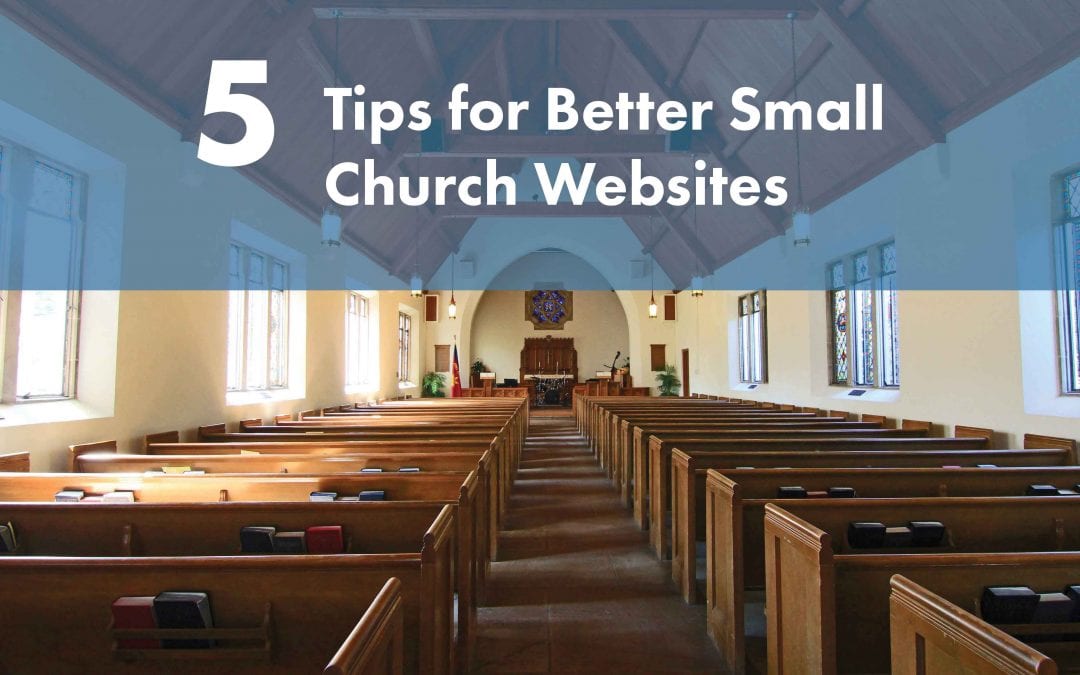Web design for small churches and nonprofits can be tricky.
Your ministry probably doesn’t have the budget of a megachurch across the country or even the larger churches across town to keep a full-time designer on staff. Maybe you don’t have volunteers in your congregations with design experience, either. Unfortunately, small budgets often equate to a poor web presence.
That doesn’t mean your church’s web presence has to suffer.
Your site cannot save people. That’s the Holy Spirit’s job, but you want to draw site visitors into your church for a Sunday service to learn more about the Truth you stand for.
Now more than ever, a website can make or break the first impression of an organization, so it’s imperative that your church’s website gives a good impression.
Here are some practical tips when considering the design and maintenance of your church or nonprofit’s website:
1. Remove outdated content
If your website is referencing past events as though they are still to come and the staff directory is out of date, viewers are less inclined to visit on Sunday morning.
Make sure your site displays only relevant information and that you have someone, perhaps church staff or a willing volunteer, to consistently maintain this. Information that is not up-to-date is perhaps the biggest deterrent for site visitors.
2. Organize content
Make sure you organize your site’s content logically.
Don’t have information about a Bible study group on your Contact page. Don’t include photo galleries of this year’s VBS on the Staff or About pages.
Your homepage should give site visitors a clear, simple overview of your church, including elements such as what your church looks like and what they can expect in a Sunday service. Having a page dedicated to expectations for first-time visitors is also a major plus.
You also don’t have to include every piece of information about your church on the homepage, only the most important information.
3. Have a simple navigation menu
Organizing the navigation menu is equally important.
Try to organize all of your pages into 4-6 main links and the rest in submenus. Make sure all the navigation links are on one line in your navigation bar.
Don’t go crazy with the submenus and nested drop-downs, either. Try to only have one submenu per main navigation link. A navigation menu that is too busy can be overwhelming for site visitors wanting to navigate the site quickly.
4. Use photography wisely
Quality photography is becoming more essential to maintaining a professional web presence.
Small and medium sized churches usually experience a catch-22: needing photography of their church and services but not having the resources to capture quality images. Whether taken on a basic camera phone or downloaded as clip art from the Internet, any kind of low-quality images take away from the online presence of a church or non-profit.
It’s extremely important that you find a way to obtain high-quality images for your ministry’s website.
Using relevant images is another key component to using photography on your site wisely. Only include photography that truly represents your ministry’s people and facilities. Otherwise, you’re setting up your visitors for unmet expectations and confusion.
Check out our article on website photography tips for further detail on having quality images on your small church or non-profit’s website.
5. Format your text wisely
If you have control over the formatting of your text, be absolutely consistent with every aspect.
Make sure all the body copy site-wide is the same font, same color (with the exception of links), and same size. Likewise, make sure all the header text or title text is the same across the site.
You don’t want any crazy or overused fonts. No Comic Sans, Papyrus, or Curlz MT, please.
Typically, your body text should be a gray that makes it easy to read if it’s on a white background, or white text if on a dark background. Your titles can be a color consistent with your brand, or the same rules as the body copy. No bright neon colors. The key is having contrast between the text color and background color.
We’ve included a few typography tips in our blog to help your church or nonprofit learn more about wise text formatting and font usage.
Remember, simplicity is key.
Modern websites have simple layouts, with clear photography, consistent color schemes, and clean sans serif or serif fonts. You want your site visitors to find information quickly and easily.
Don’t get caught up in having a website that is super flashy (pun intended if you thought anything Flash-based is a good idea). It’s more important for your small church or non-profit to have a website that accurately represents your ministry and gives information to visitors so that they want to visit in person than to have every site feature possible.
Design.faith is a design agency offering web design and creative services to small and medium sized churches and non-profits. Our team publishes content regularly to help churches connect design and faith. We want to focus on your ministry’s specific needs and creating a unique web presence to help you reach your community. Contact us today if you are ready to get started or have questions about how we may be able to serve the design needs of your ministry.


Recent Comments